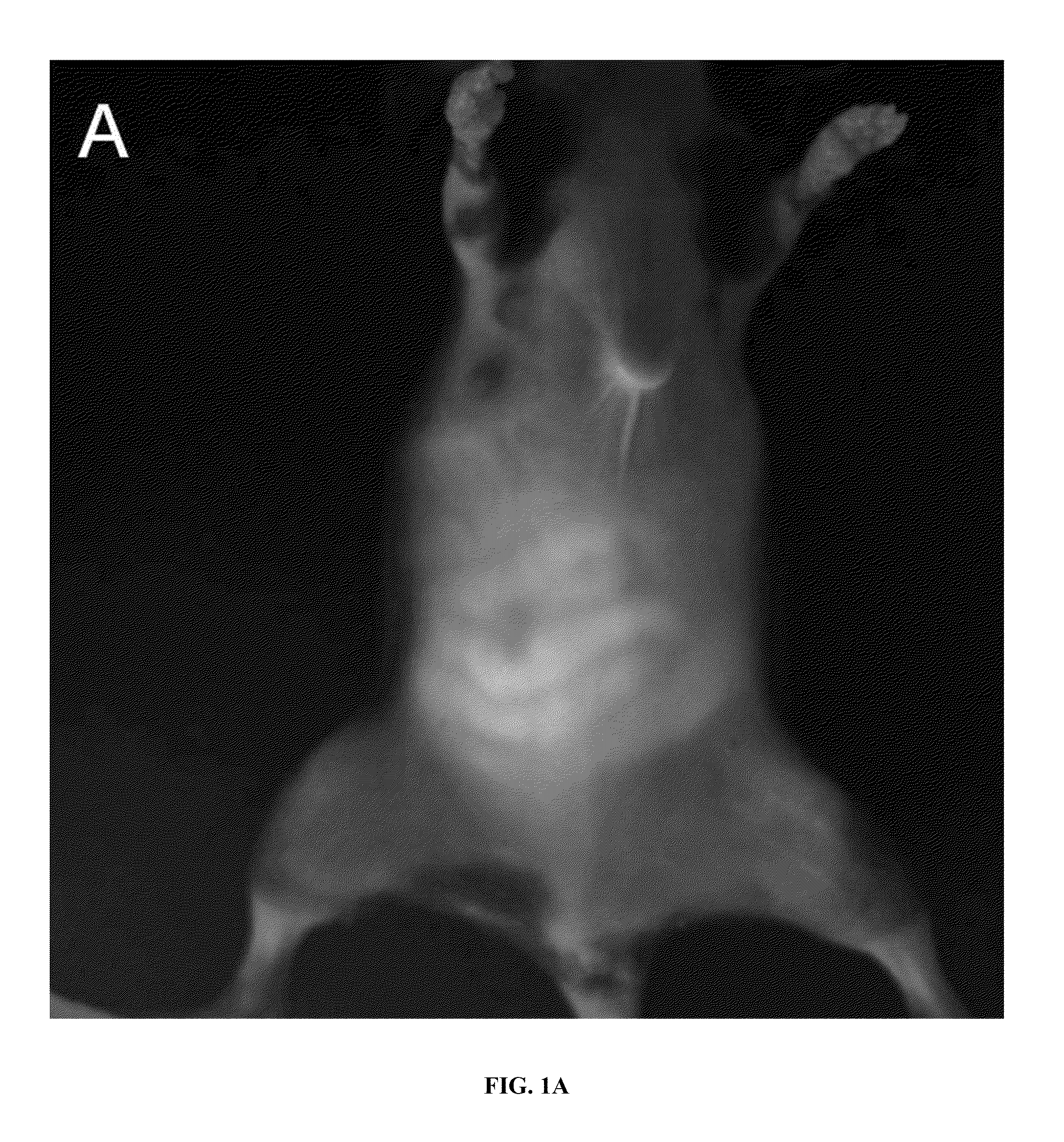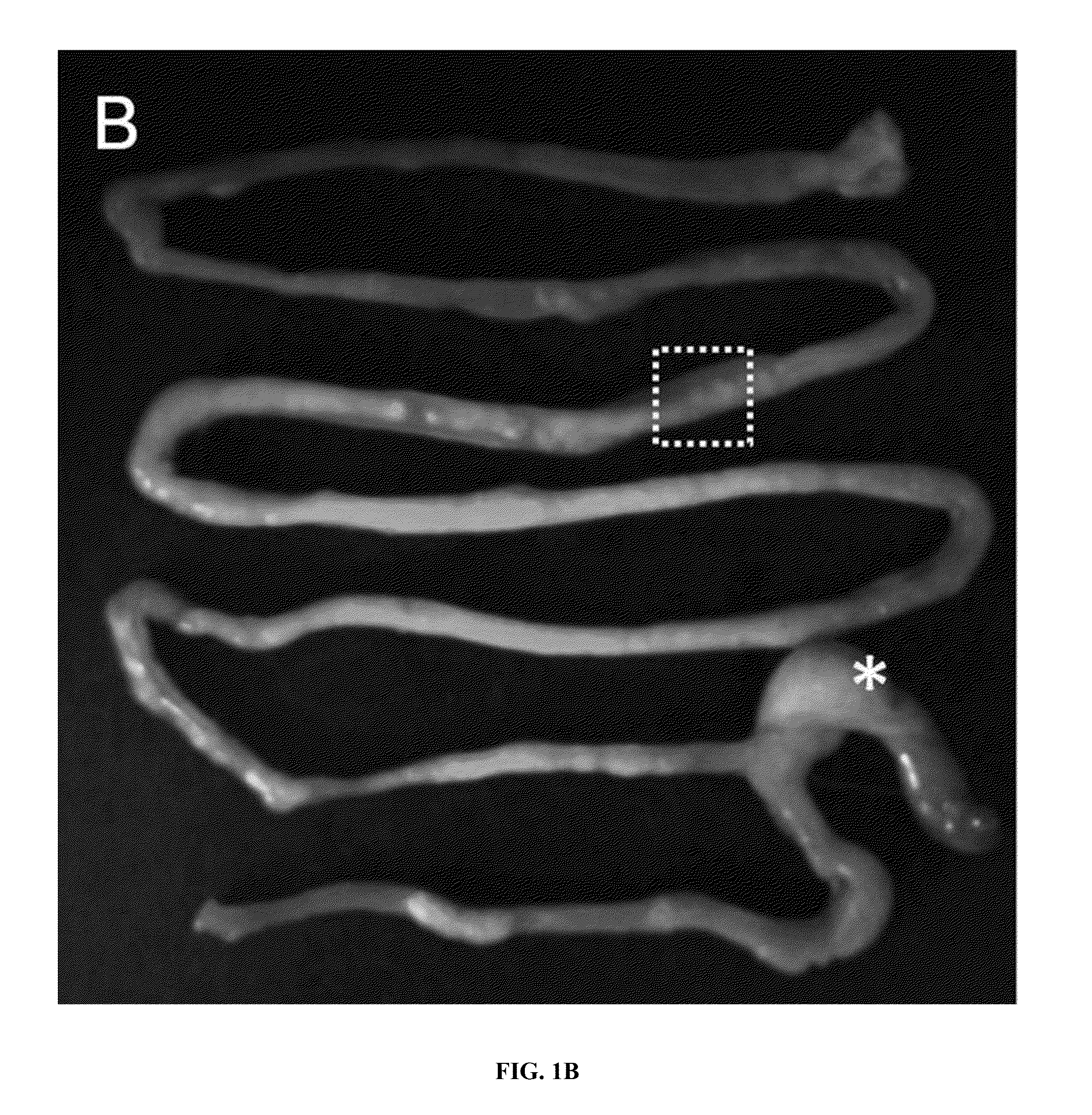Methods and compositions for non-invasive, dynamic imaging of intestinal motility
a dynamic imaging and intestinal motility technology, applied in the field of biomedical imaging, can solve the problems of inability to enable longitudinal monitoring, no utility in the clinic, less useful in veterinary clinical practice, etc., and achieve the effect of sufficient temporal resolution and sensitivity
- Summary
- Abstract
- Description
- Claims
- Application Information
AI Technical Summary
Benefits of technology
Problems solved by technology
Method used
Image
Examples
example 1
Using Auto Fluorescence to Non-Invasively Monitor Intestinal Motions
[0109]Six to eight week old mice that happened to carry a Rasa 1 floxed allele (rasa 1 fl / fl), i.e. the Rasa 1 allele is flanked by a Lox P sites to facilitate removal). Rasa I fl / fl mice are completely normal (until exposed to Cre-recombinase) with regards to GI function and were maintained in standard cages with free access to water and pellets (Purina 5053, Labdiet, PMI Nutritional International, St. Louis, Mo., USA) prior to imaging. Once anesthetized with isofluorane, the hair of the mice was clipped and depilatory agents were used to remove residual hair 24 hr prior to fluorescence imaging. Mice were housed and maintained in a pathogen-free mouse facility accredited by the American Association for Laboratory Animal Care. All experiments were performed in accordance with the guidelines of the Institutional Animal Care and Use Committee. Animal experiments were approved by University of Texas Health Science Cent...
example 2
Using Exogenous Fluorescence to Monitor Intestinal Motions
[0116]In order to clearly characterize and demonstrate the abilities of the methods disclosed, studies were carried out on mice as a model for all animals, including but not limited to those animals that can suffer a gastrointestinal motility disease or disorder. Such animals include, but are not limited to, laboratory animals, domesticated and livestock animals, wild and captured animals such as those that are in zoos, companion animals and humans.
[0117]Mice were chosen because part of the study involved opening the peritoneal cavity and removing organs to provide detailed information about the method and its abilities. Therefore, the subjects of the study were Female C57BL6 mice (4-6 wk old; Charles River, Wilmington, Mass., USA) that were housed and maintained in a pathogen-free mouse facility accredited by the American Association for Laboratory Animal Care. All studies were performed in accordance with the guidelines of ...
PUM
 Login to View More
Login to View More Abstract
Description
Claims
Application Information
 Login to View More
Login to View More - R&D
- Intellectual Property
- Life Sciences
- Materials
- Tech Scout
- Unparalleled Data Quality
- Higher Quality Content
- 60% Fewer Hallucinations
Browse by: Latest US Patents, China's latest patents, Technical Efficacy Thesaurus, Application Domain, Technology Topic, Popular Technical Reports.
© 2025 PatSnap. All rights reserved.Legal|Privacy policy|Modern Slavery Act Transparency Statement|Sitemap|About US| Contact US: help@patsnap.com



